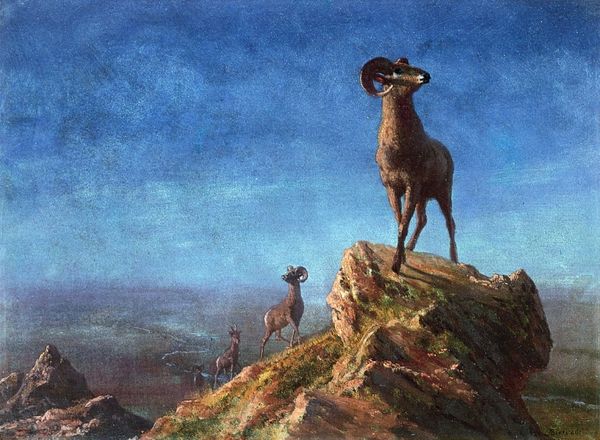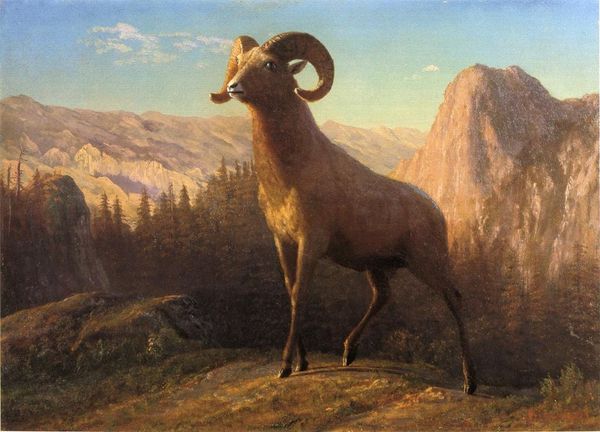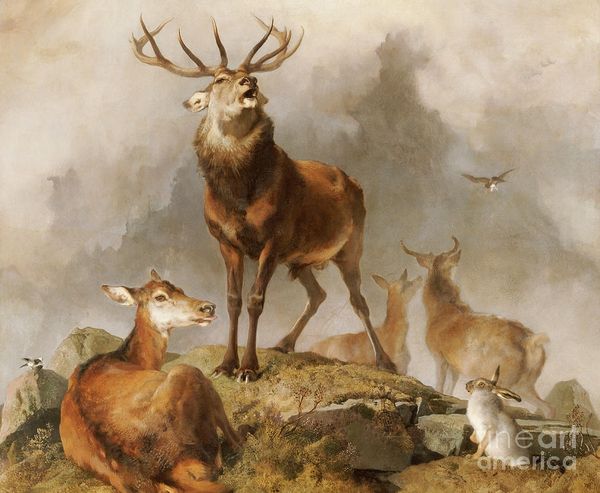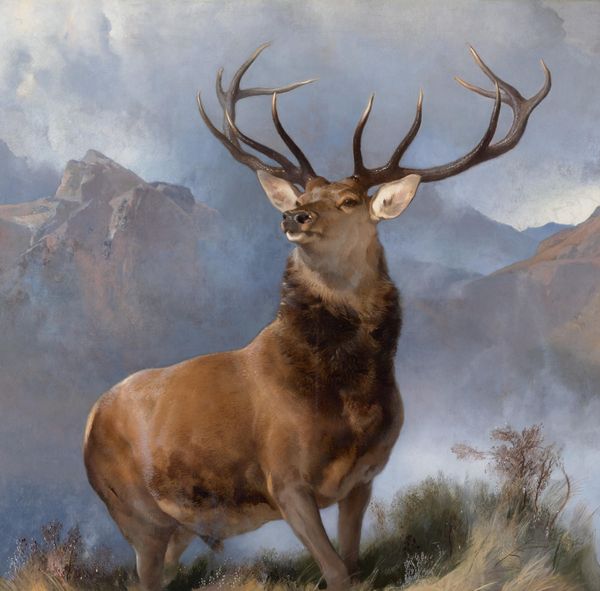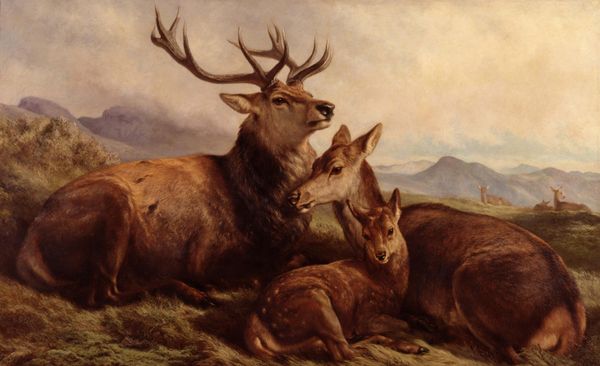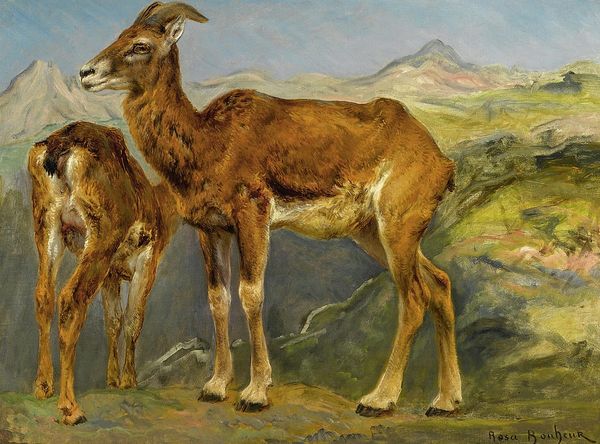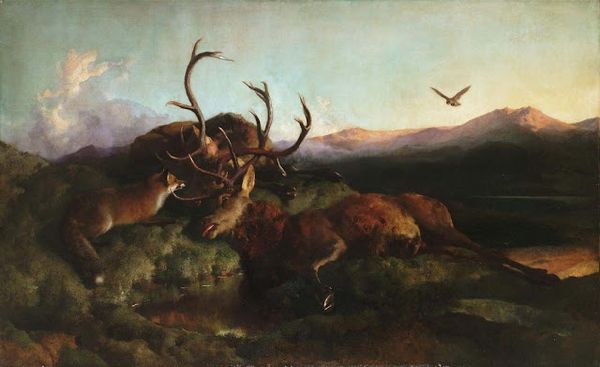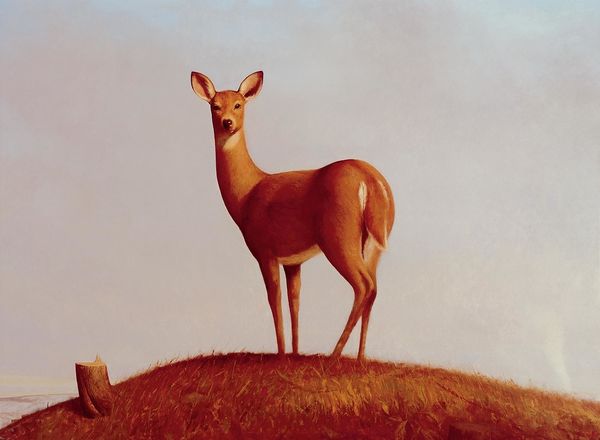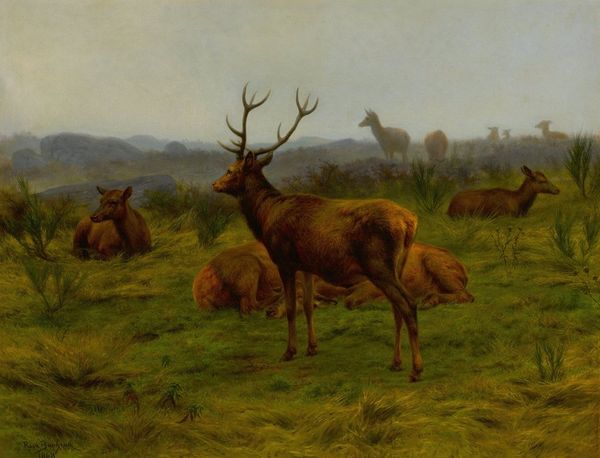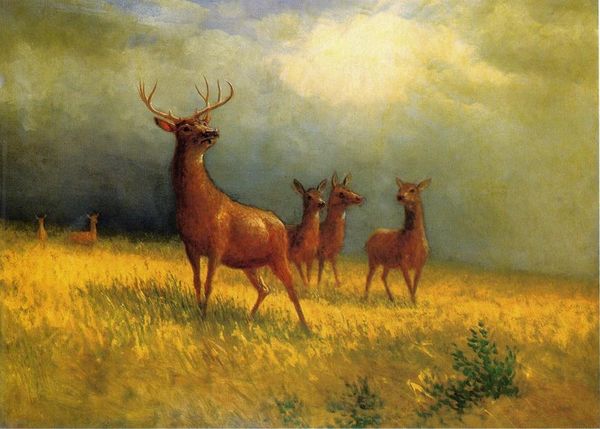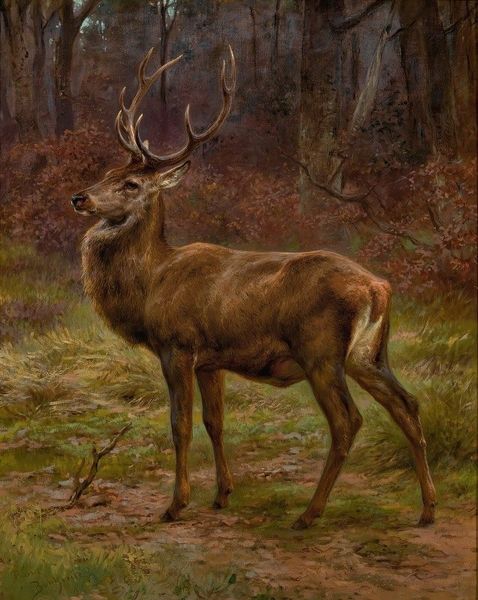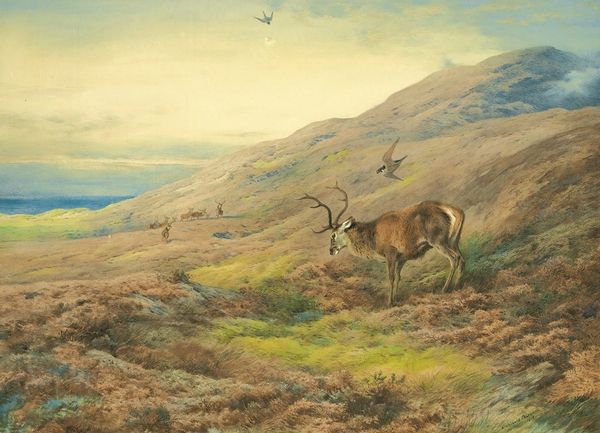
Dimensions: 122.56 x 97.16 cm
Copyright: Public domain
Curator: It has a slightly mournful atmosphere, doesn’t it? A kind of stark nobility in this harsh landscape. Editor: That’s precisely the quality Bierstadt aims to capture. This is his “Rocky Mountain Sheep,” created in 1883, a piece from his mature period painted in oil on canvas. It embodies the romantic vision of the American West so central to the Hudson River School. Curator: Looking closely at the materials, the impasto is interesting – you can see the physicality of the paint in the rendering of the rocks. It gives a weightiness to the foreground that contrasts with the almost ethereal sky. I'm curious, what do you think motivated his process? Editor: Certainly! He's using that contrast quite deliberately, in my view. Remember, Bierstadt's paintings were instrumental in shaping public perception of the West. He catered to an Eastern audience hungry for depictions of sublime, untamed landscapes, conveniently omitting the inconvenient truths of westward expansion and displacement of native peoples. It's a political landscape painting in disguise. Curator: Ah, the artifice of it all! Presenting this unpeopled wilderness – it feeds the mythology. But what about the sheer labor involved in creating such a detailed work? Think of the transportation of materials, the sheer volume of paint. It's an enormous material undertaking, really. And where was this exhibited? That impacts reception so profoundly. Editor: Records indicate that works such as this were showcased in wealthy homes, galleries primarily catering to industrialists and politicians, reinforcing a kind of… ownership, a visual claim over the landscape mirrored in the materials. The sheer scale contributes to this—to possess such a massive depiction was, in a way, to symbolically possess the land itself. The framing of it as an achievement – both artistic and societal! Curator: So, the consumption of the artwork as an assertion of dominance… intriguing. The commodification of nature represented as artistic and territorial control. I do admire his control of light and tone but examining all the processes does taint my view. Editor: Indeed. Viewing Bierstadt with a contemporary eye obliges us to consider the complicated political context embedded within even the most aesthetically pleasing scenes. Curator: So much to think about with something that, on the surface, just seems majestic and a bit sad. Editor: Absolutely, seeing beyond the surface can provide such different understandings!
Comments
No comments
Be the first to comment and join the conversation on the ultimate creative platform.
